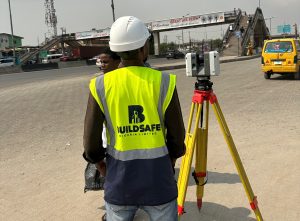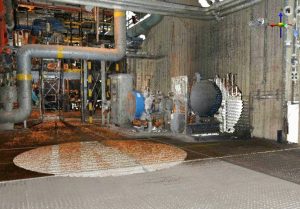Reality Capture Adoption – Managing Insurance Business to Profitability through Technological Innovation
By Engr. Donatus Oduopara
Introduction
The role of insurance in a thriving economy cannot be overstated, as it effectively manages risks. In the unfortunate event of a loss, an insurance company will compensate the policyholder according to the terms of the policy. Insurance coverage is essentially protection against risk, liability, or potential loss. It provides individuals with the ability to recover from financial losses resulting from incidents such as car accidents, and property/infrastructure damage. In developed nations, insurance is crucial in ensuring that policyholders return to normal operations after a loss. In Nigeria, insurance companies are struggling to attract customers which can lead to an inability to meet their obligations if claims exceed the total premium received. This paper aims to explore ways in which insurance companies can transform the industry to ensure greater success.
Case Study – The Ammonium Nitrate Explosion in Beirut in 2020
On August 4, 2020, the capital of Lebanon, Beirut, was shaken by a catastrophic explosion that killed at least 218 people and left over 6,000 people injured. The main cause of the explosion was approximately 2,750 tons of ammonium nitrate stored in a warehouse at the Port of Beirut. This large amount of ammonium nitrate had been seized from an abandoned ship impounded in 2014. The stored fertilizer was ignited by sparks from a fire at an adjacent warehouse, creating an explosion that caused enormous property damage and left an estimated 300,000 people homeless. Two years on, the explosion continues to impact Beirut, with subsequent collapses of adjacent grain silos occurring in July and August 2022. Aside from the human cost of the explosion, the economic impact was huge. A report by Al Roeya states that the Association of Insurance Companies in Lebanon (ACAL) estimated the total losses from the blast to be between $5 billion and $10 billion. It is expected that insurance and possibly reinsurance protection will cover around 30% or up to $3 billion of this total. Unfortunately, no one benefited from this transaction, not the government, not the insurance companies, and not the economy of Lebanon.
Property Evaluation
Assessing the facility to be insured is a critical step in the insurance coverage process. Currently, this evaluation is carried out by visually inspecting the facility and reviewing any relevant documentation provided by the customer. While this approach may seem adequate if the premium is accurately determined and agreed upon by the customer, it doesn’t provide the insurance company with a comprehensive understanding of the customer’s operations. The insurance company needs to examine the customer’s operations as it allows them to identify potential risks and hazards that could impact coverage. Therefore, facility evaluations play a pivotal role in determining both the coverage and premium. It should not only end in evaluation. Insurance companies should try to see how to avert most risks. Take note that the Beirut port was sitting on gunpowder for 6 years. If the insurance companies were conscious about averting the risk, they would have detected it.
Understanding the Operations of the Customer
The insurance business in Nigeria is facing a major setback because they tend to accept the risk associated with their policies rather than focusing on mitigating the risk. Insurance companies should pay attention to understanding the various risk factors covered by the policies and the operations of their customers. This will help in avoiding most of the risks or minimizing their impact. If the insurance companies in Beirut had followed this approach in our case study, the explosion could have been avoided. To achieve this objective, insurance companies can adopt technology like Reality Capture, which allows subject experts to remotely study and identify the risks associated with the customer’s facility. The technology should also facilitate simulations using the identified risks as parameters.
Reality Capture Technology
The process of creating a digital 3D model of an object, building, or site is known as Reality Capture. This involves scanning the object using either a lidar or a photogrammetric scanner. While lidar emits laser light onto the target object and measures the reflection with sensors, photogrammetry uses photos of the real site to create a visual 3D model of the object. Both methods produce similar outputs, which are a real photo model and a point cloud model. A point cloud is a group of points that provide geometrical information about the object, allowing for accurate geometric measurements from the model. Meanwhile, the photo component of the model provides a photographic impression that lets you view the object without returning to the site. Our focus here is on the 3D laser scanner, commonly called Lidar. There are several models of 3D laser scanners available, each with different capabilities in terms of size, range, and speed of measurement. They can capture even the smallest details of any object within the scanner’s range. Simply put, the 3D laser scanner captures data that is processed to create a digital replica of the object. This digital replica allows the professionals to review the facility as many times as possible.
The Paradigm Shift in Insurance Business
Rather than the current model of the insurance business which is to derive appropriate premiums that will cover any loss as well as the operating cost of the insurance company and wait for the risk to occur, insurance companies should invest in efforts that will ensure that the risk does not occur. The images below are self-explanatory. Images 1 and 2 are 3D laser scanners in operation. Images 3 and 4 are the sample point cloud and image data outputs of the scan. One striking feature of the output data is clarity. There is, absolutely nothing about the site that you cannot pick from the output data. This attribute makes it possible for any competent personnel to remotely study and identify the risks associated with any facility. The output data are so detailed that anyone can relate to it.




The New Order
In line with the new system, insurance companies first step will be to request for 3D laser scan of the facility. The data will be passed to the Risk Prevention Team who will assess the model to identify any potential risks triggers and create necessary measures to avert them. The main goal of this approach is to proactively eliminate risk factors and reduce the occurrence of incidents, ultimately resulting in fewer claims and significant cost savings for insurance providers.
Next Steps
Contact Buildsafe at info@buildsafeng.com or buildsafecontact@buildsafeng.com for further discussions with your team to understand what works for you.
